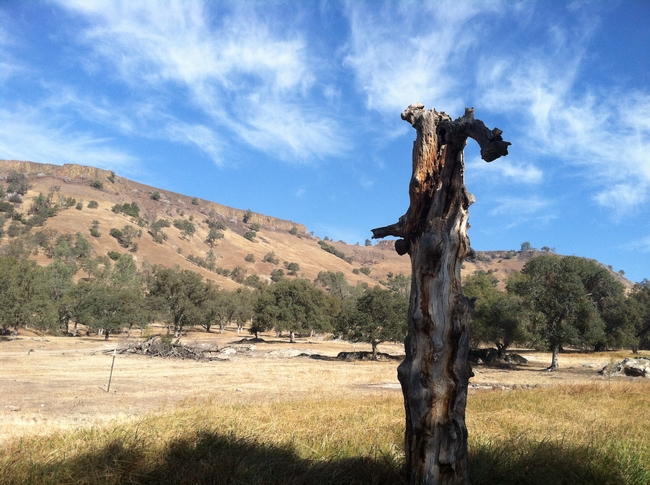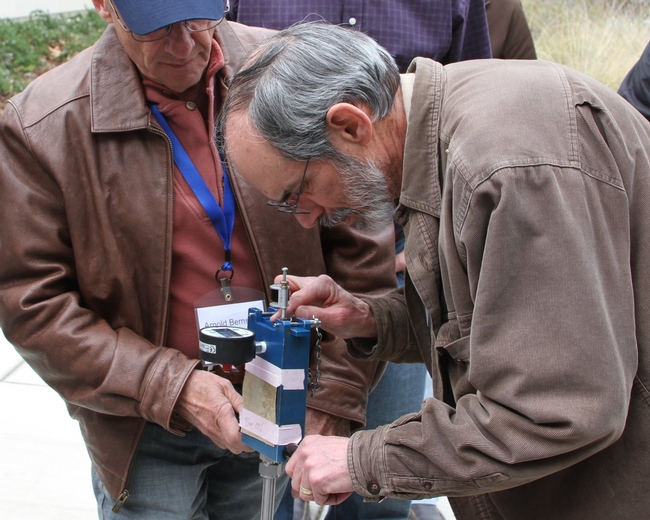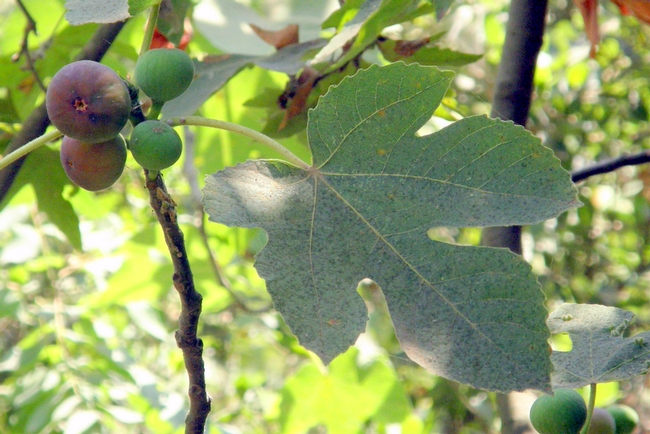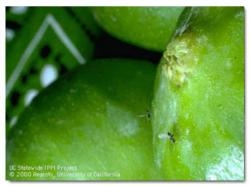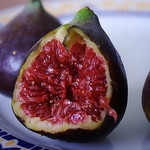From the UC Blogosphere...
The Cactus Climber
He's a survivor. His sisters and brothers didn't eat him when he emerged from the egg case. In fact, he probably ate some...
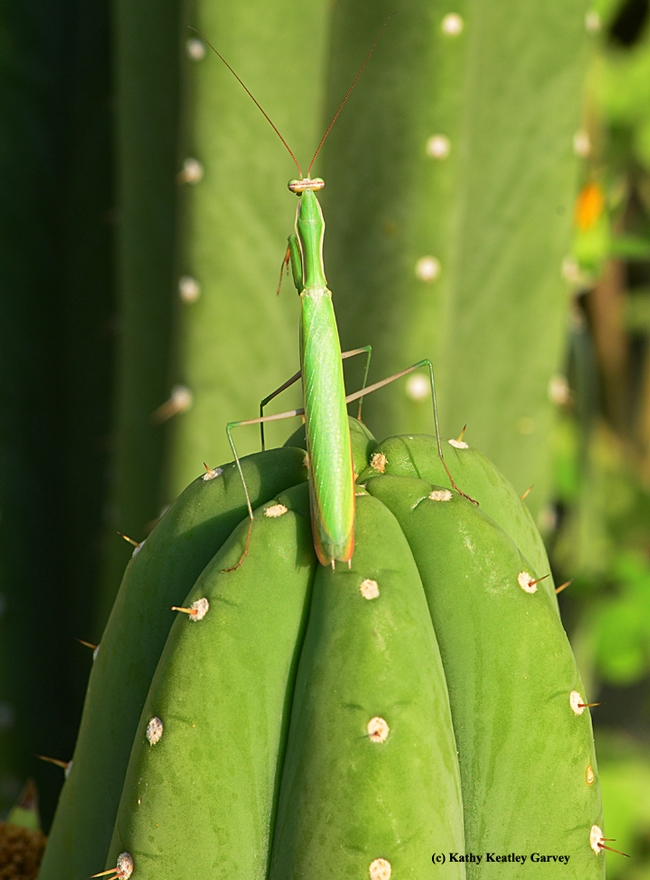
Praying mantis, perfectly camouflaged, stops in the midpoint of his climb. (Photo by Kathy Keatley Garvey)
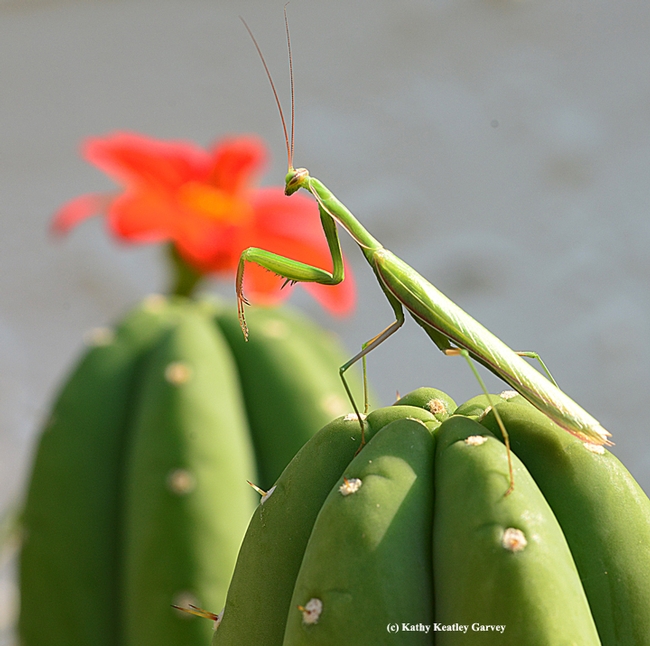
Praying mantis reaches the summit. In the background is a Mexican sunflower, Tithonia. (Photo by Kathy Keatley Garvey)
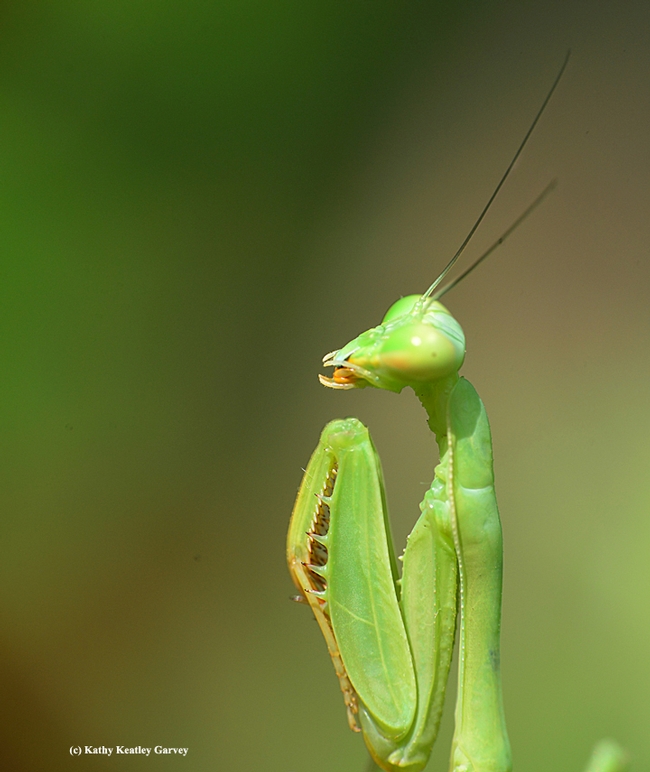
Praying mantis folds his spiked forelegs, as if in prayer. (Photo by Kathy Keatley Garvey)
California's 'exceptional drought' to cost the state millions
California suffered severe droughts in the 1970s, 80s and early 90s, but the current drought is the worst in history, according to Daniel Summer, director of the UC Agricultural Issues Center. He outlined the reasons in a story published on Food, Nutrition and Science.
For one thing, the state's population is larger than ever before, requiring more water resources. Increased planting of trees and vines in the state has given farmers less flexibility. In addition, recent increases in crop and livestock prices increase losses from lower production, Sumner said. He suggests the drought can be a lesson for the future.
"This current drought has highlighted some weaknesses in drought preparation that could be improved for future drought scenarios," the story said.
In dry years, California relies heavily on groundwater. Sumner said the aggregate measures of groundwater depth over time and space are good, but their estimates of regional groundwater use are poor and need improvement. Improved management of groundwater basins will be key to securing California's agriculture in the future, Sumner said.
The story also quoted Leslie Roche, postdoctoral researcher in the Department of Plant Sciences at UC Davis. Roche said the drought will have lasting impacts on how ranchers plan and prepare for future droughts.
"There is a deep undercurrent of concern within the ranching community that this drought will persist, and that practical options to maintain productivity in that event are very limited. This is true throughout all quarters of California's agricultural community,” Roche said.
Eric Mussen to Keynote WAS Conference
Honey bee guru Eric Mussen is retired but the "R" word isn't stopping him. Mussen, who served 38 years as California's...
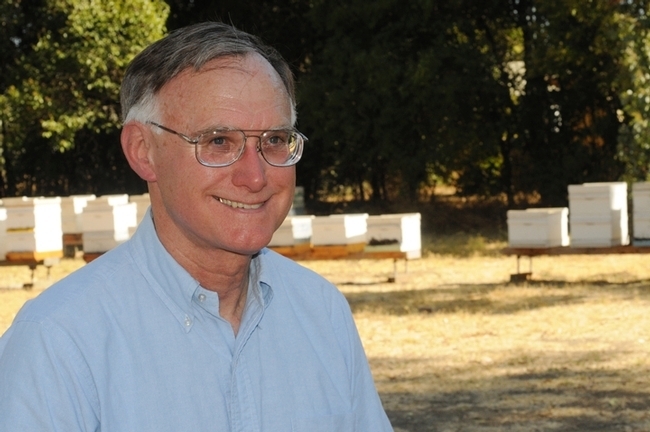
Eric Mussen, who retired this summer as Extension apiculturist, will be the keynote speaker on Thursday, Sept. 18 at the Western Apicultural Society conference at the University of Montana. (Photo by Kathy Keatley Garvey)
California drought steps-up need for high-tech solutions
With California suffering through the third year of drought, more farmers are turning to technology that will help them make smart irrigation decisions, reported Sarah Shoen in the Fresno Bee.
The story focused on Tom Chandler, a fourth-generation Sanger farmer who uses a pressure chamber to measure the amount of water is in the leaves of his almond trees.
"Using the pressure chambers is like having a fuel gauge for your plants," Chandler said.
For the story, Shoen talked to Allan Fulton, the UC Cooperative Extension irrigation and water resources advisor in Glenn, Colusa and Shasta counties. Fulton has experience with pressure chambers stretching back more than a decade.
"Understanding what the chamber is trying to tell you helps farmers concentrate water in areas that need it the most," Fulton said. "This means more production while using the same amount of water."
The pressure chamber results show farmers whether the crops need water, or if they can get by without water at the moment.
Ken Shackel, professor in the Department of Plant Sciences at UC Davis, learned by conducting research that dry soil doesn't mean the plant is suffering.
"You can save tons of water thanks to the chambers," Shackel said.
Carnivorous Figs: The Relationship Between Wasps and Figs
I learned a lot of new, interesting information during the Master Gardener program. One of the most interesting things that I learned, that I love to share with people, is that some figs could be considered carnivorous. Ok, maybe that is making things sound a little too much like "Little Shop of Horrors," but at the very least some of the figs you have eaten in your lifetime were not exactly vegan (yes, there is debate about this on internet forums).
As figs are starting to show up at local farmer's markets now, I thought this would be a great time to share this little tidbit with the blog, so that other people can use this information as fun garden party banter.
Around the world there are over 700 varieties of figs, but they all fall into four types:
Common: Common figs (such as the Brown Turkey) do not require pollination from another tree, or from a wasp. True to their name, common figs are most common in home gardens. Common figs are 100% vegan.
Caprifigs: Caprifigs produce small non-edible fruit (also called a male fruit because it contains male flowers). The purpose of the caprifig is to produce pollen that fertilizes the last two types of figs, Smyrna and San Pedro. The pollen produced by the caprifig is transported to the female fruit (which contains the female flowers) by the Blastophaga wasp.
Smyrna: Smyrna figs produce a large edible fruit, but the figs must be pollinated. If the figs are not pollinated they will shrivel and fall from the tree.
San Pedro: San Pedro figs produce two crops per season. The first crop, called the Breba, ripens in early spring on the previous season's growth and requires no pollination. The second crop, also called the main crop, happens later in summer, on the current season's growth, and requires pollination from a caprifig and Blastophaga wasp.
Now, a little more about the fig's friend, the Blastophaga wasp and how figs are pollinated. What we commonly think of as the fig "fruit" is actually an accumulation of tiny flowers all contained inside the "fruit." It is these flowers that need to be pollinated in Smyrna and San Pedro-type figs. The fruits produced by Smyrna and San Pedro-type figs have an opening on the end of the fruit, called the ostiole.
Female Blastophaga wasps will lay their eggs inside the male caprifigs. The male wasps emerge, wingless, from their eggs first and fertilize the female wasps before the females emerge from the flowers they were laid in. Most male Blastophaga die before exiting the fruit.
The female Blastophaga, thanks to her wings, can exit the caprifig to enter a female fruit where she will try to deposit her eggs. On her way out of the male caprifig she picks up pollen from the male flowers which she carries with her into the female fruit. Upon entering the female fruit her wings are ripped off. She has been tricked! Not only can she not lay her eggs in the female fruit (because the female flowers are not compatible with her egg-laying needs,) but she cannot escape! Thus, after pollinating the female fruit, the female Blastophaga dies inside the female fruit (yes, the edible fruit).
These tricky figs contain a specialized enzyme to break down the female Blastophaga wasp's body, but the moral of the story is that when you eat a Smyrna-type fig, or a late-harvest San Pedro-type fig, you are eating a carnivorous fruit!



